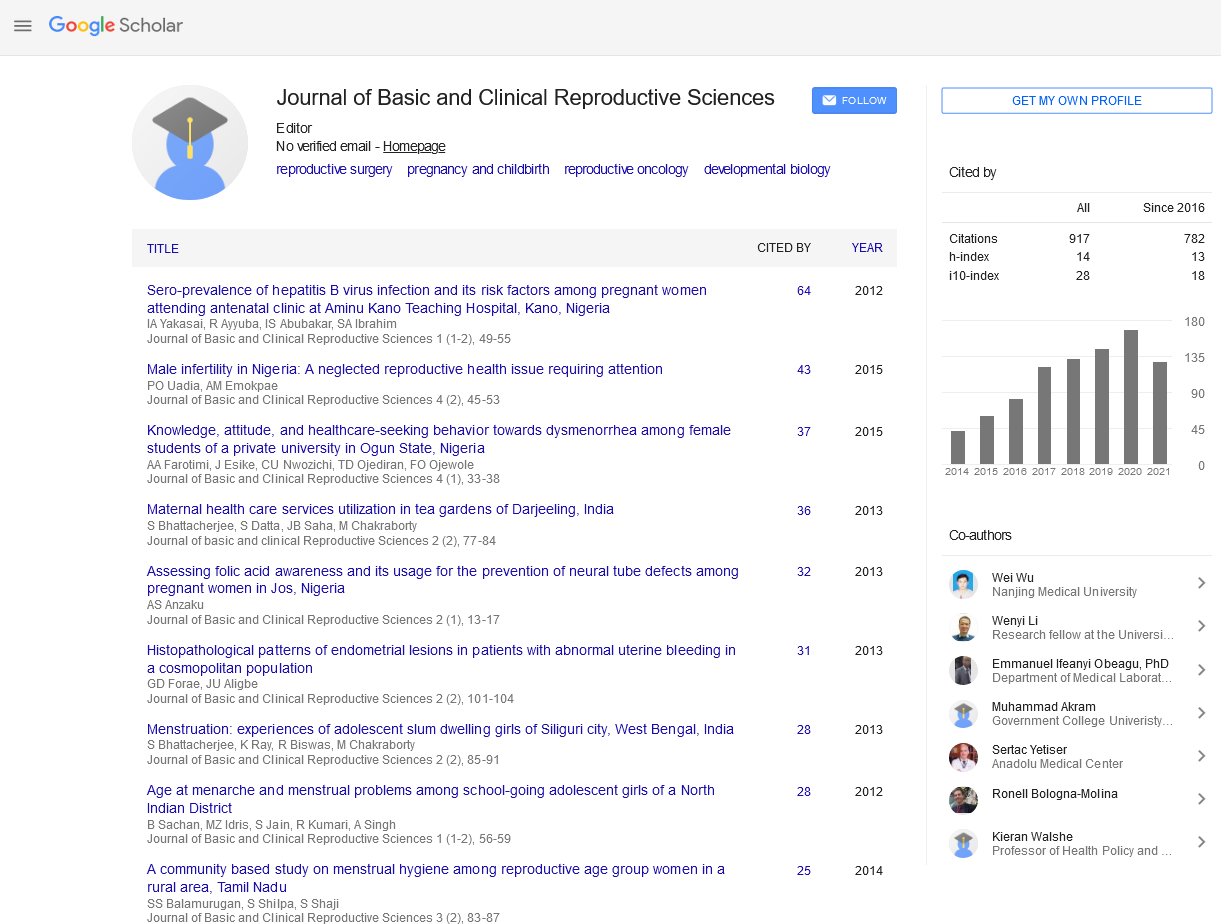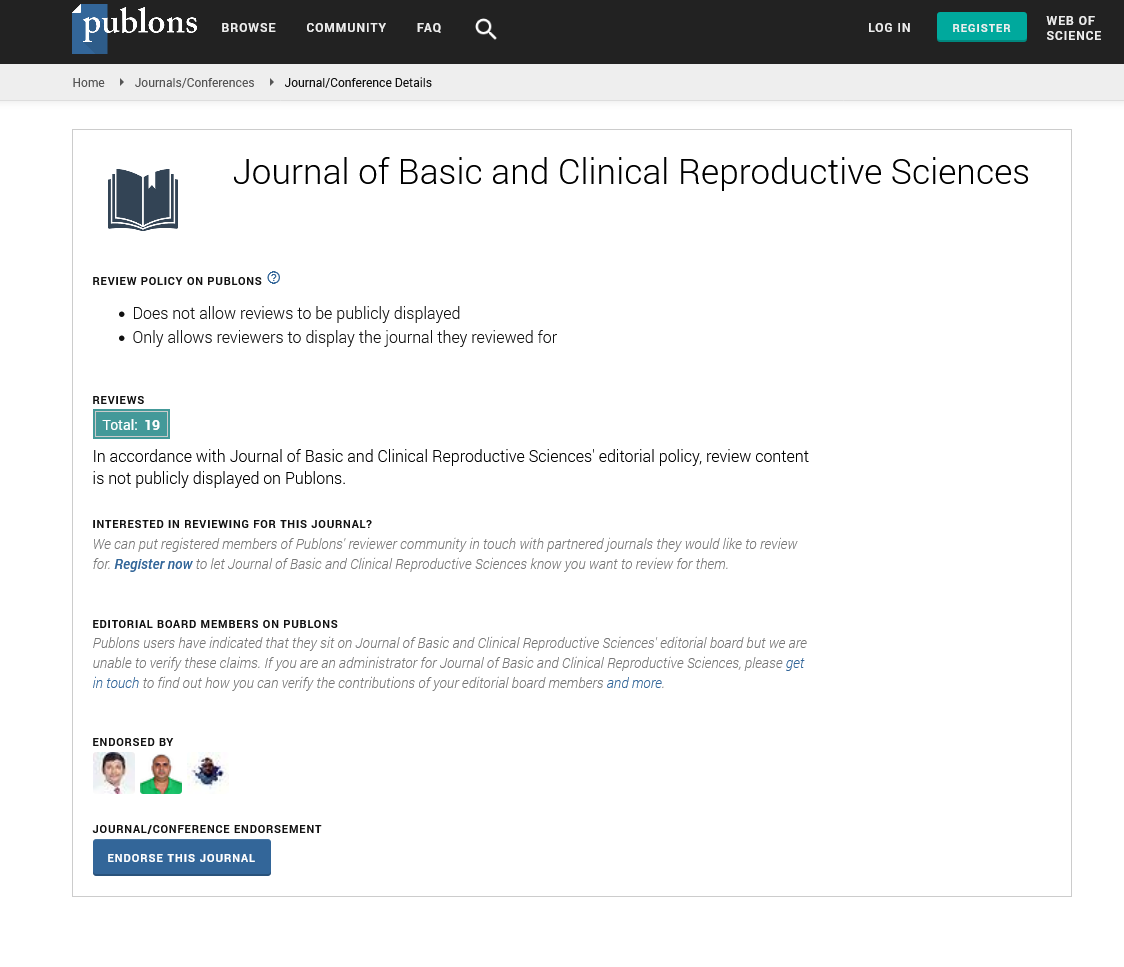Perspective - Journal of Basic and Clinical Reproductive Sciences (2023) Volume 12, Issue 1
Genomic Instability during Early Development, Telomeres, and Aged Re-production
Received: 10-Jan-2023, Manuscript No. JBCRS-23-92179; Editor assigned: 12-Jan-2023, Pre QC No. JBCRS-23-92179; Accepted Date: Feb 10, 2023 ; Reviewed: 23-Jan-2023 QC No. JBCRS-23-92179; Revised: 03-Feb-2023, Manuscript No. JBCRS-23-92179; Published: 10-Feb-2023
This open-access article is distributed under the terms of the Creative Commons Attribution Non-Commercial License (CC BY-NC) (http://creativecommons.org/licenses/by-nc/4.0/), which permits reuse, distribution and reproduction of the article, provided that the original work is properly cited and the reuse is restricted to noncommercial purposes. For commercial reuse, contact reprints@pulsus.com
Description
Genomic instability refers to changes or mutations that occur in the genetic material of an organism’s cells. These changes can be caused by a variety of factors, including environmental factors, lifestyle choices, and errors that occur during DNA replication. During early development, the process of cell division and DNA replication is particularly vulnerable to errors that can lead to genomic instability. This is because the cells are rapidly dividing and differentiating to form the various tissues and organs of the developing embryo. During cell division, the DNA must be accurately replicated so that each new cell receives a complete set of chromosomes. Errors that occur during this process can lead to genetic mutations. Exposure to environmental toxins: Environmental toxins, such as radiation or chemicals, can damage DNA and increase the risk of genetic mutations. Inherited genetic mutations Some individuals may inherit genetic mutations from their parents that increase their risk of genomic instability. The consequences of genomic instability during early development can vary depending on the type and severity of the mutations. In some cases, the mutations may be harmless and have no impact on the health of the individual. However, in other cases, the mutations can lead to developmental abnormalities or an increased risk of certain diseases. It is important to minimize the risk of genomic instability during early development by avoiding exposure to environmental toxins and ensuring that any inherited genetic mutations are identified and addressed through genetic counselling and testing.
The ability to reproduce typically declines as individuals age. In women, fertility starts to decline in their late 20s or early 30s, and this decline becomes more rapid after the age of 35. Men also experience a decline in fertility as they age, although it is typically more gradual than in women. In addition to decreased fertility, there are other health risks associated with reproduction at an advanced age. Women who become pregnant later in life are at higher risk for complications such as gestational diabetes, high blood pressure, and preterm birth. They are also more likely to have a child with chromosomal abnormalities, such as Down syndrome. Men who father children at an advanced age may also have an increased risk of passing on genetic mutations to their offspring. Overall, while it is possible for individuals to reproduce at an advanced age, it is important to consider the potential health risks and to consult with a medical professional to make an informed decision.
Genomic instability during early development, telomeres, and aged reproduction are all interconnected topics that involve changes in genetic material over time. Here’s a brief overview of each.
Genomic instability during early development
Genomic instability refers to a high frequency of DNA mutations and other genetic changes that can occur during cell division. Early development is a crucial time for genomic stability, as the DNA in newly-formed cells is particularly vulnerable to damage. Various factors can contribute to genomic instability during early development, such as exposure to toxins, radiation, or oxidative stress. If these mutations are not repaired, they can lead to permanent changes in the DNA sequence that can cause diseases or developmental abnormalities.
Telomeres: Telomeres are protective caps on the ends of chromosomes that prevent them from deteriorating or fusing with other chromosomes. Telomeres shorten each time a cell divides, and once they become too short, the cell can no longer divide and is said to have reached its “Hayflick limit.” Telomere shortening is a natural part of aging, and it has been associated with age-related diseases such as cancer, cardiovascular disease, and dementia.
Aged reproduction: As women age, their fertility declines due to a variety of factors, including a decreased number and quality of eggs and changes in hormonal levels. Women over the age of 35 are also at a higher risk of having a child with chromosomal abnormalities, such as Down syndrome. Men can also experience declines in fertility as they age, due to a decrease in sperm quality and quantity.
The genomic instability during early development can lead to changes in the DNA sequence, which can affect telomere length and contribute to age-related declines in fertility and increased risk of chromosomal abnormalities in offspring.


